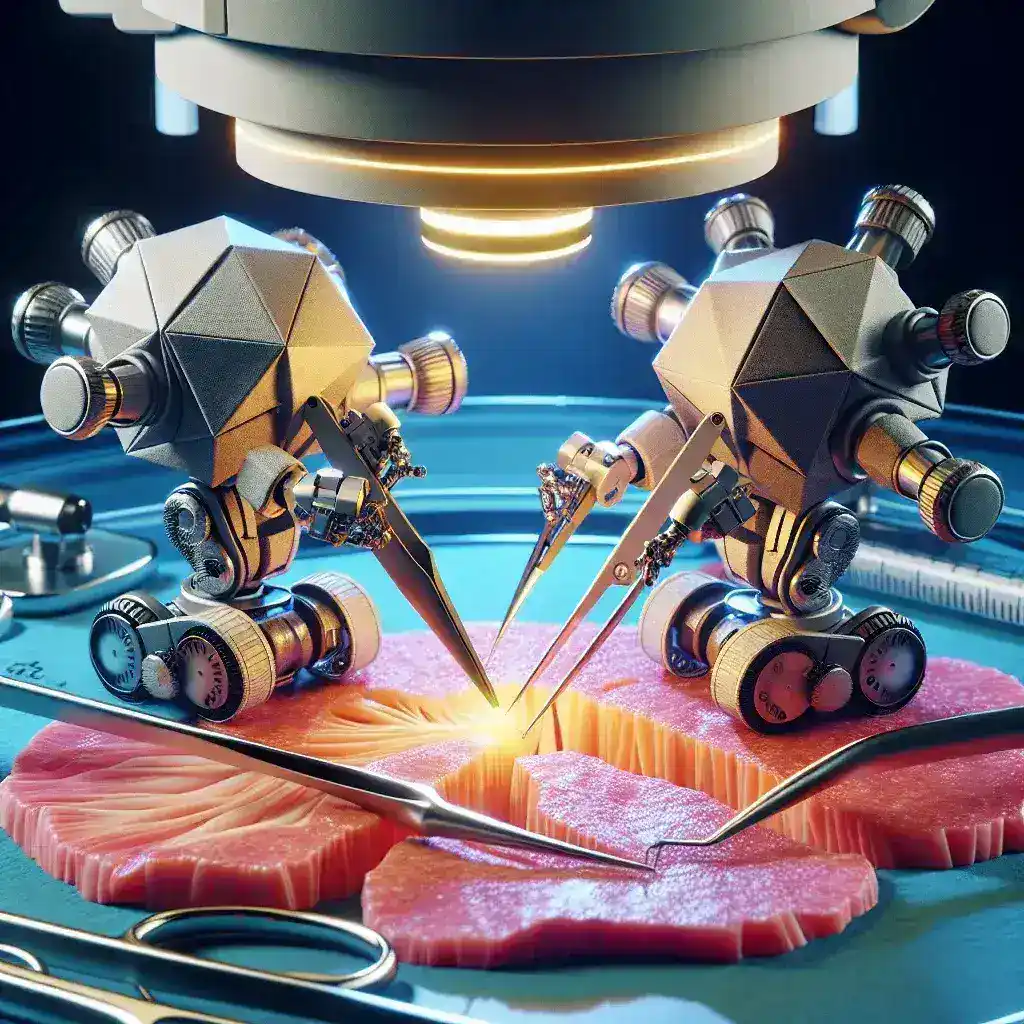Introduction
In recent years, the field of minimally invasive surgery (MIS) has witnessed groundbreaking innovations, one of which is the advent of origami robots. These unique robotic systems, inspired by the ancient art of origami, are transforming surgical techniques by offering enhanced dexterity, precision, and adaptability. This article will delve into the fascinating world of origami robots, exploring their development, applications, advantages, and future potential in minimally invasive surgery.
Historical Context
The concept of origami itself has a rich history, dating back centuries in Japan. The art of folding paper into intricate shapes has inspired various fields, including architecture, engineering, and now, robotics. The application of origami principles to robotics began to gain momentum in the early 2000s, as researchers explored how folding structures could create lightweight, flexible, and compact machines.
Notably, the first significant steps toward origami robotics were taken at institutions like MIT, where researchers began to understand how these folded structures could enable robots to perform complex tasks in constrained environments. As technology advanced, particularly in materials science and robotics, the potential for origami robots in surgical applications became increasingly apparent.
Understanding Origami Robots
Origami robots are typically constructed using lightweight materials that can be folded and manipulated into various shapes. These robots leverage principles of geometric transformations to achieve movement and perform tasks. The design allows for folding and unfolding actions, which can be particularly advantageous in surgical procedures where space is limited.
Key Features of Origami Robots
- Compactness: Their ability to fold into a small size means they can be introduced through smaller incisions, reducing patient trauma.
- Flexibility: The ability to change shape allows these robots to navigate complex anatomical structures.
- Precision: Origami robots can be designed to perform delicate tasks with high accuracy.
- Adaptability: They can be easily adjusted or reconfigured for various surgical procedures.
Advantages of Origami Robots in Minimally Invasive Surgery
The introduction of origami robots in MIS brings several advantages:
1. Reduced Recovery Time
Minimally invasive techniques, coupled with the use of origami robots, often lead to shorter recovery times for patients. Smaller incisions typically result in less pain and quicker healing, allowing patients to return to their daily lives sooner.
2. Enhanced Surgical Precision
Origami robots can be designed to perform intricate movements that are challenging for human hands. This increased precision can help reduce complications during surgery, leading to better outcomes and lower rates of error.
3. Cost-Effectiveness
By minimizing the need for large surgical teams and reducing recovery times, origami robots can lower overall surgical costs. This is particularly beneficial for healthcare systems aiming to provide quality care while managing expenses.
4. Improved Patient Outcomes
Studies have shown that patients undergoing surgeries with the assistance of origami robots experience fewer complications, reduced blood loss, and lower infection rates. These improvements can significantly enhance the quality of care.
Challenges and Limitations
Despite their promising potential, origami robots also face several challenges:
1. Technical Complexity
The design and construction of origami robots require advanced engineering and materials science. Creating a robot that can effectively navigate the intricacies of human anatomy is a complex task requiring significant expertise.
2. Regulatory Hurdles
As with any innovative medical technology, origami robots must undergo rigorous testing and approval processes to ensure their safety and efficacy. Navigating regulatory frameworks can be a time-consuming and challenging aspect of bringing these robots to market.
3. Training and Adoption
Surgeons and medical professionals will need training to effectively utilize origami robots in surgical practice. Acceptance and integration into existing surgical systems may take time.
Future Predictions
The future of origami robots in minimally invasive surgery looks promising. As technology continues to advance, we can expect to see:
1. Increased Autonomy
Future origami robots may incorporate AI and machine learning, enabling them to make real-time decisions during surgery and further enhancing their precision and adaptability.
2. Broader Applications
While currently used in specific surgical procedures, origami robots may expand into various medical fields, including orthopedics, cardiology, and even emergency medicine.
3. Enhanced Materials
As new materials are developed, origami robots may become even lighter, stronger, and more versatile, enhancing their functionality and performance.
Real-World Examples
Several research teams and companies are actively exploring the use of origami robots in surgical applications:
1. Soft Robotics Research
At MIT, researchers have developed soft origami robots that can navigate through tight spaces and perform tasks such as suturing wounds. This research has shown significant promise for minimally invasive surgical techniques.
2. University of California, Berkeley
Berkeley researchers have created origami-inspired robots capable of complex movements that mimic human hands, demonstrating their potential use in surgical applications.
Conclusion
Origami robots represent a significant step forward in the evolution of minimally invasive surgery. Their unique design offers numerous advantages, including reduced recovery times, enhanced precision, and improved patient outcomes. While challenges exist, ongoing research and technological advancements promise to overcome these hurdles and pave the way for widespread adoption. As we look to the future, the integration of origami robots into surgical practices may ultimately revolutionize the field of medicine, offering patients safer and more effective treatment options.
References
While this article does not include hyperlinks, interested readers are encouraged to explore academic journals and publications for more information on the advancements in origami robotics and their applications in minimally invasive surgery.

